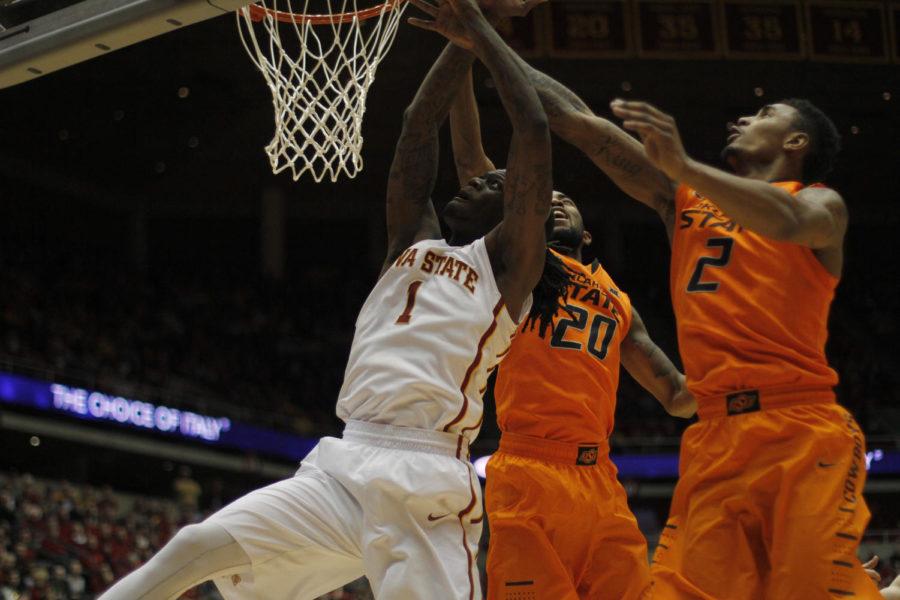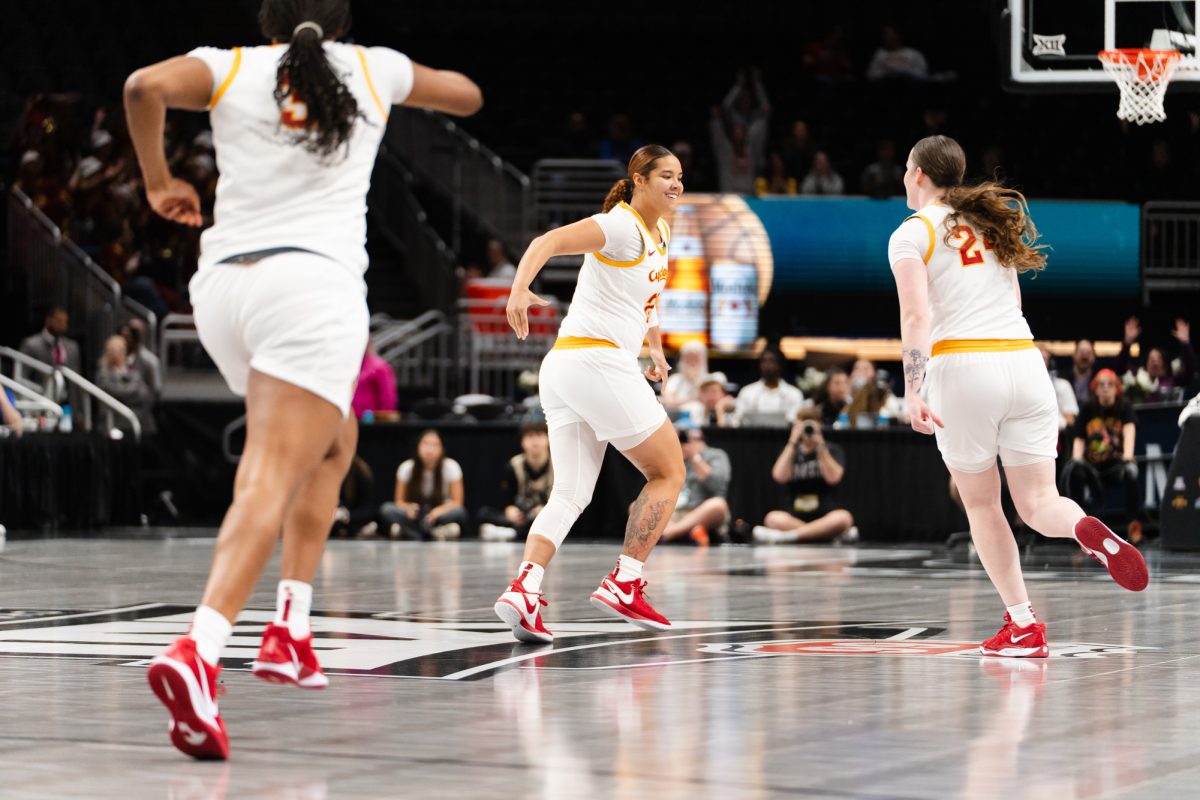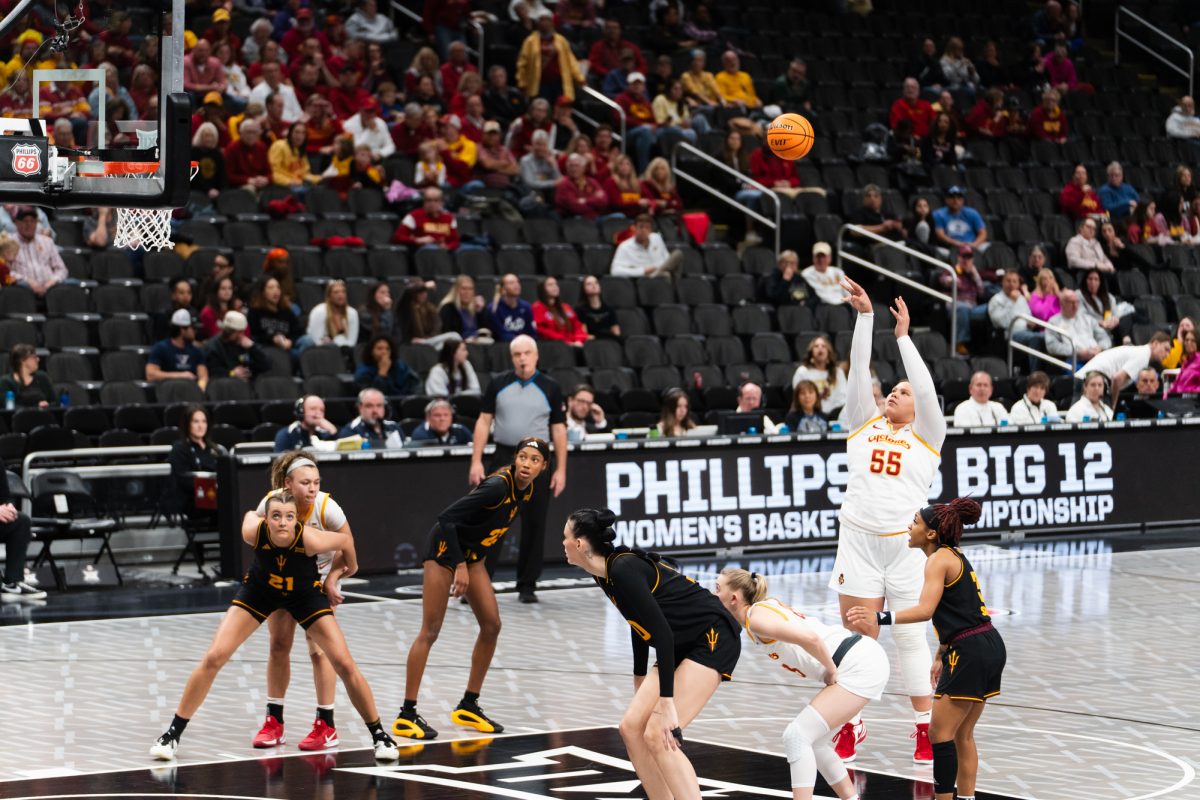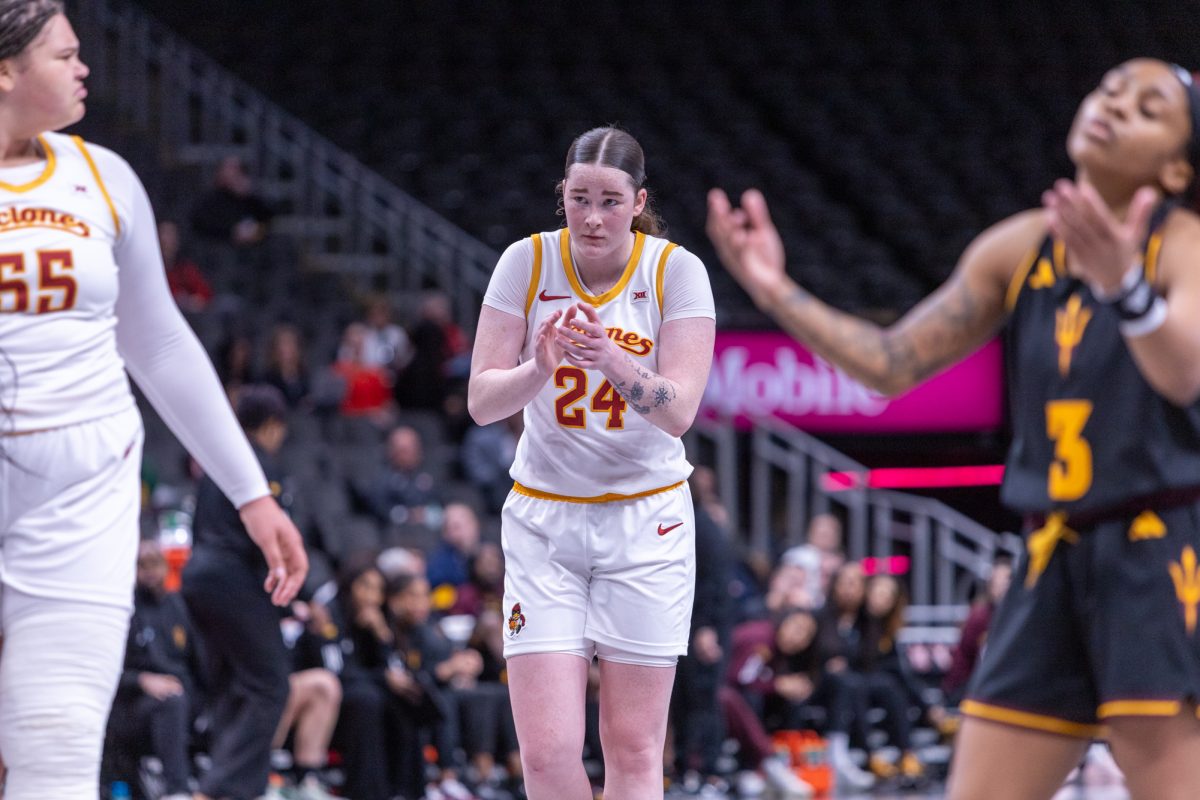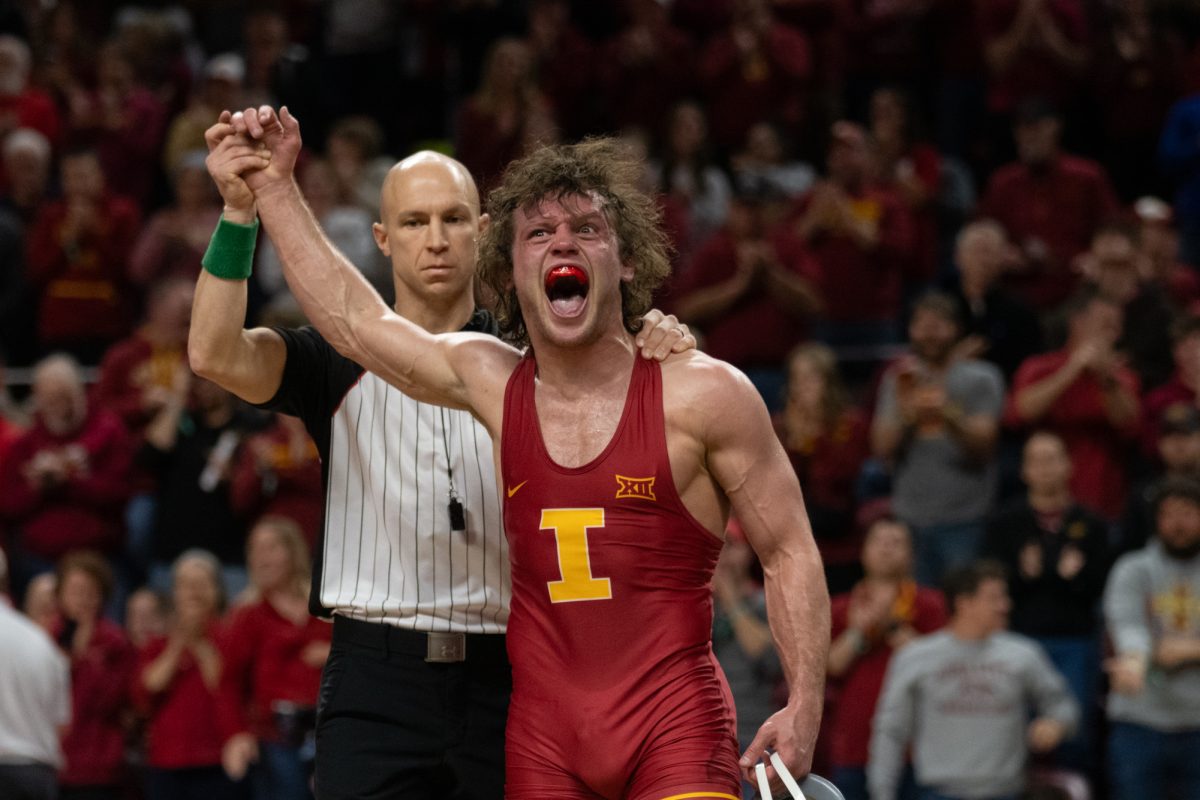Iowa State tackles another potent defense in Baylor
Redshirt junior forward Jameel McKay shoots the ball during Iowa State’s matchup with Oklahoma State on Jan. 6. McKay scored five points, helping the Cyclones to a 63-61 victory in the team’s Big 12 conference opener.
January 14, 2015
There is more than one way to disrupt a Cyclone.
Oklahoma State controlled the ball and limited Iowa State’s possessions, which the Cyclones always want to maximize, as the team features the most productive offense in the Big 12. More possessions lead to more shots. More shots lead to more points. More points lead to more ISU wins.
West Virginia pushed Iowa State to the edge, frustrating the ISU offensive flow by forcing 18 turnovers and pushing the ISU floor generals, sophomore Monté Morris and junior Georges Niang, to the bench with foul trouble late in a hotly contested game.
Both strategies failed, but just barely.
On Jan. 14 in Waco, Texas, Baylor will attempt to use its one-of-a-kind zone scheme to exacerbate a problem — poor shooting numbers — that has plagued Iowa State against major conference opponents this season stretching all the way back to the team’s first loss against Maryland in November.
“It is another very unique game because they play a defense that nobody else in the country plays, [which] cannot be simulated,” said ISU coach Fred Hoiberg. “Usually when you play a zone, it is more of a 2-3 look. With Baylor’s zone, it is just different.”
What makes the Baylor zone singular is the implementation of both a 3-2 style, as well as a 1-3-1, which Hoiberg said pose different problems and change how the pestering defensive looks must be attacked.
“[Against] a lot of zones, you get open shots. You do not get a lot of open shots against their zone,” Hoiberg said. “They do a great job of taking [those] away, and they take away the middle, which is where a lot of zones you can attack.”
The complex riddle that is the Baylor defensive front is something Hoiberg said can not be simulated in practice, adding that the answers must be unearthed in real time on the floor as the game is being played, which is a risky but necessary proposition.
Baylor’s stylistic advantage has helped the Bears hold opponents to only 56.3 points per game on just over 38 percent shooting from the field, including a mark of roughly 27 percent from behind the arc, which leads the Big 12.
“It is a little funky,” Niang said of Baylor’s defense. “It is tough to play against, but I think coach draws up great schemes against all defenses.”
Baylor’s defensive numbers are particularly troubling to an ISU offense that drains nearly eight three-pointers every game and shoots the long ball more frequently than any other Big 12 team. Even more disconcerting is the fact that despite leading the conference in production at more than 80 points per contest, Iowa State has only been able to muster 67 points per game during its last three outings.
“We are going to have to shoot it well at Baylor if we want to have a chance to win,” Hoiberg said. “Sometimes it’s as simple as that.”
Although the Cyclones posted only 74 points against the Mountaineers, it was their offensive efficiency that allowed for the team’s triumph. Iowa State shot 50 percent from the field, as well as 39 percent from three.
If Iowa State hopes to move to 3-0 in true road tests this season and extend its conference winning streak to seven games, replicating those offensive numbers against the Baylor zone will be paramount.
Perhaps the second most important factor will be the health of redshirt junior Jameel McKay, who strained his back before the game against Oklahoma State and has been dealing with pain ever since.
“It did affect the way I was playing [against West Virginia], especially in the first half,” McKay said. “Then, in the second half early on it was hurting. I did not feel as fast or as explosive as I normally am, so I felt it.”
Despite his discomfort, McKay grabbed seven boards, swatted five shots and netted six points in only 18 minutes. His presence will be required against a Baylor squad that pulls down more than 41 rebounds per game, including 16 on the offensive end, and outperforms its opponents on the glass by an average of more than 10 rebounds per contest.
“It is not something that is going to get healed in one day [or] two days. It is going to probably linger for maybe a week or so, but I just have to do whatever it takes to make it get better,” McKay said. “I am supposed to play Wednesday. That is the plan.”


